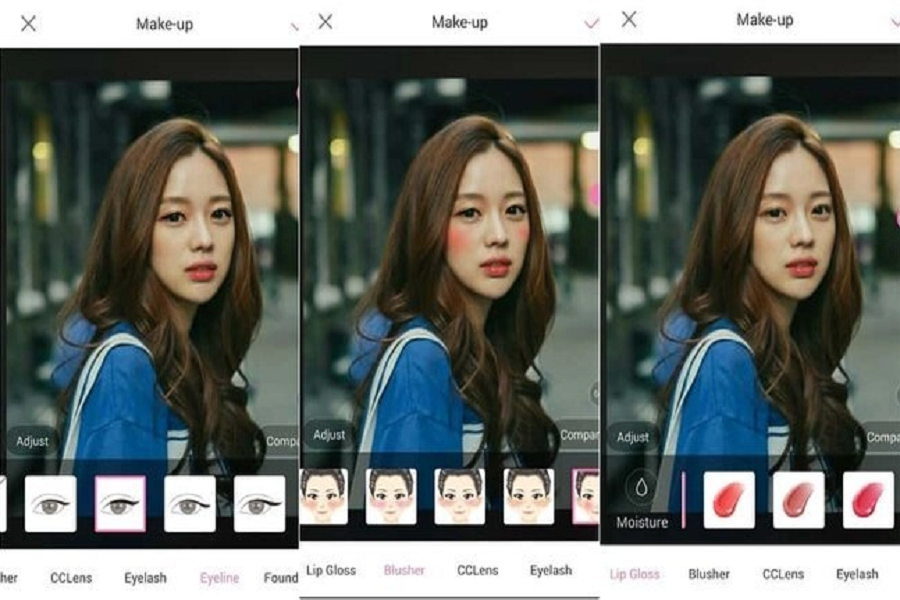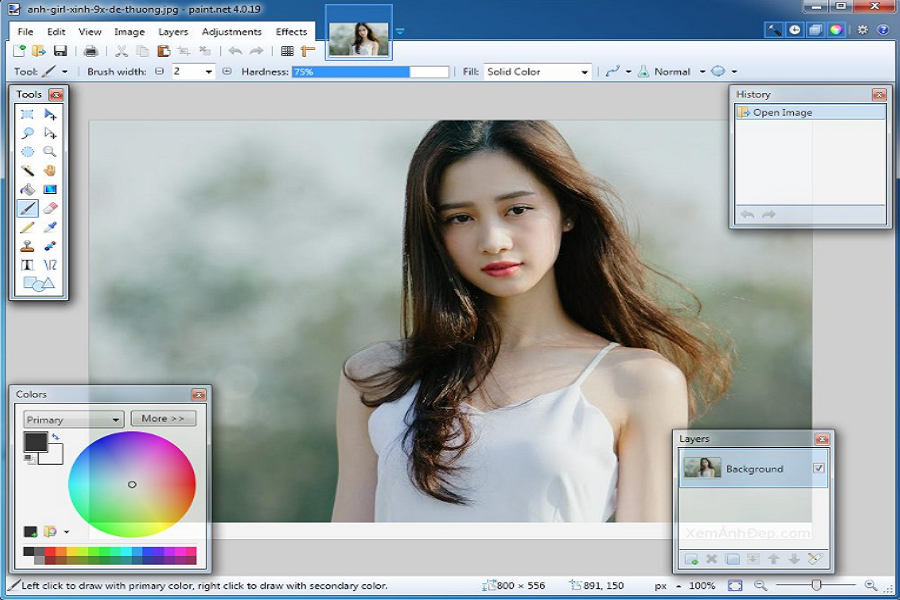In today’s digital age, photo editing apps have gained significant traction among users who seek to enhance their images effortlessly. With the rise of mobile photography and the omnipresence of social media, these applications have become indispensable tools for individuals looking to improve their photographic creations. The convenience of having powerful editing software at one’s fingertips transforms everyday moments into visually appealing content, making it easier to share experiences and memories with a wider audience.
Introduction to Photo Editing Apps
The increasing popularity of mobile photography, coupled with the aesthetic demands of platforms such as Instagram and Facebook, has motivated users to refine their images more than ever before. Free photo editing apps support this trend by offering a diverse range of functionalities that cater to various editing needs. From basic tools like cropping and resizing to more advanced features such as layering, color correction, and noise reduction, users are empowered to exercise their creative instincts while producing professional-quality photographs.
Moreover, the inclusion of filters and presets has simplified the editing process, enabling users to achieve specific looks with just a few taps. These features not only save time but also spark creativity, allowing individuals to visualize and express their artistic vision. Users can experiment with different styles and techniques, which further encourages a more personalized approach to photo editing.
As more individuals engage in photography and content creation, the significance of these apps in enhancing one’s online presence cannot be overstated. Whether for personal enjoyment, professional portfolios, or social media engagement, the ability to elevate images through photo editing apps has reshaped the landscape of digital visual expression. The accessibility and efficiency of these tools continue to attract users, making them a crucial element in the realm of photography today.

Criteria for Choosing the Best Photo Editing Apps
When seeking the ideal photo editing app, several key criteria must be considered to ensure that the selected application meets both functional requirements and user preferences. One of the most critical aspects is user-friendliness. An intuitive interface allows users, whether beginners or seasoned editors, to navigate the app effectively and utilize its features without frustration. This means that the best photo editing apps should prioritize ease of access and straightforward controls to cater to a broad audience.
In addition to usability, the range of available features significantly contributes to the app’s overall appeal. Essential tools like filters, layers, and special effects enrich the editing experience and offer users various creative options. Users should search for apps that not only provide basic editing capabilities but also advanced features that can elevate their images. The presence of tools like retouching options, adjustment sliders, and text overlays can enhance the editing process considerably.
Compatibility is another vital factor, especially when considering the diverse operating systems available today. Top-rated photo editing apps should be optimized for both iOS and Android platforms, ensuring they cater to a wide user base. This compatibility allows users to edit and share their images seamlessly across devices, enhancing convenience.
Furthermore, the quality of output images must not be overlooked. A good app ensures that edited photos maintain high resolution and clarity, thereby preserving the original quality of images. Lastly, while many apps offer premium features for a fee, the focus here is on free alternatives. The best photo editing apps should provide ample free features that allow users to perform substantial edits without incurring costs, making them accessible to everyone.
Reviews of Top Free Photo Editing Apps
In the ever-evolving world of digital photography, free photo editing apps have become essential tools for both amateur and professional photographers. Below are reviews of some of the top free photo editing applications currently available, discussing their unique features, usability, and effectiveness.
Snapseed is a robust editing application developed by Google. It offers an extensive range of features, including filters, adjustment tools, and healing options. The app’s user interface is intuitive, allowing for easy navigation. One of its standout features is the selective adjust tool, which enables users to modify specific areas of an image rather than applying changes to the entire photo. Pros include a comprehensive layout and professional-grade editing tools, whereas cons may encompass a slight learning curve for beginners. User ratings typically hover around 4.8/5.
VSCO is another popular option that not only provides basic editing features but also serves as a social media platform. The application offers numerous presets inspired by film photography, allowing for a distinctive aesthetic in images. Its clean layout is user-friendly, making it simple for users to access their favorite tools. Pros include a vast library of filters and a community-oriented approach, while cons may involve limited features in the free version. User ratings generally reflect a score of 4.6/5.
Pixlr combines simplicity and versatility in a single application, making it ideal for quick edits. The app comes with an array of templates and overlays, aiding in the design aspect of photography. Users appreciate the app for its speedy performance and straightforward interface. On the downside, advanced features are somewhat restricted in the free version. Overall, Pixlr receives a user rating of about 4.5/5.
Lightroom Mobile, part of Adobe’s renowned suite, offers a powerful editing experience on-the-go. It provides an exceptional amount of control over settings such as exposure, contrast, and color correction. The integration of Creative Cloud is convenient, enabling seamless access across devices. Although it has a steep learning curve, the advanced capabilities make it worth the effort; user ratings typically reach around 4.7/5.
These applications each have their unique set of features tailored to different user needs, making them excellent choices in the realm of free photo editing.
Related Articles: Best 24 inch monitor for photo editing
Basic Editing Techniques to Master
In the era of social media and digital photography, mastering basic photo editing techniques can significantly enhance the quality of your images. A variety of free photo editing apps are available, providing tools that cater to both beginners and advanced users. Among these essential skills, cropping serves as a fundamental technique that allows photographers to reframe their images. This can draw attention to the subject by removing unnecessary elements from the frame, thus improving overall composition.
Adjusting brightness and contrast is another vital technique in photo enhancement. Brightness adjustments help in correcting poorly lit images, making them more appealing. On the other hand, contrast adjustments add depth to images by making the light areas lighter and the dark areas darker. Properly balancing these elements can lead to more vivid and engaging photographs. Many free photo editing apps provide sliders for these adjustments, enabling users to see the impact of changes in real-time.
Furthermore, applying filters can instantly transform an image’s mood and aesthetic. Filters are predefined adjustments that can enhance colors or create a stylistic effect. By experimenting with different filters, users can discover their personal style, allowing their photos to stand out. Additionally, fine-tuning colors through saturation and hue adjustments can elevate an image’s vibrancy and ensure that colors appear true to life or artistically altered as per preference.
Encouraging readers to test various combinations of these basic techniques fosters creativity and individual expression in photography. Whether using a mobile app or desktop software, developing these skills is crucial for anyone aspiring to improve their photo editing capabilities and produce visually stunning images.
Advanced Features and Special Effects
The landscape of free photo editing applications has evolved, offering users a range of advanced features that were once exclusive to professional software. Notably, layers are a foundational element in many of these apps, allowing users to stack multiple images or effects without permanently altering the original photograph. This capability is essential for creating complex compositions or for making non-destructive edits. For instance, apps like Photopea and GIMP provide users with the ability to manipulate layers effectively, making it possible to create intricate designs or enhance images with precision.
Another significant advancement found in various free photo editing tools is the use of masks. Masking allows users to selectively apply adjustments to certain areas of an image, resulting in a more refined and targeted enhancement. By utilizing masks, editors can emphasize focal points or create soft transitions for a more artistic presentation. Additionally, blending modes, commonly available in applications such as Adobe Photoshop Express, enable users to experiment with different visual styles by altering how layers interact with each other. This feature opens up endless possibilities for creative expression.
Moreover, filters play a crucial role in enhancing images through unique visual styles. Many free applications offer filters that can transform a standard photograph into an artistic masterpiece. Users can experiment with double exposure effects, which combine two images into one, creating an eye-catching and surreal result. Apps like Snapseed and PicsArt not only provide these filters but also allow for customization, enabling users to adjust intensity levels to match their creative vision. The integration of these advanced features in free photo editing apps empowers users to refine their skills and explore their creativity without the burden of costly software.

